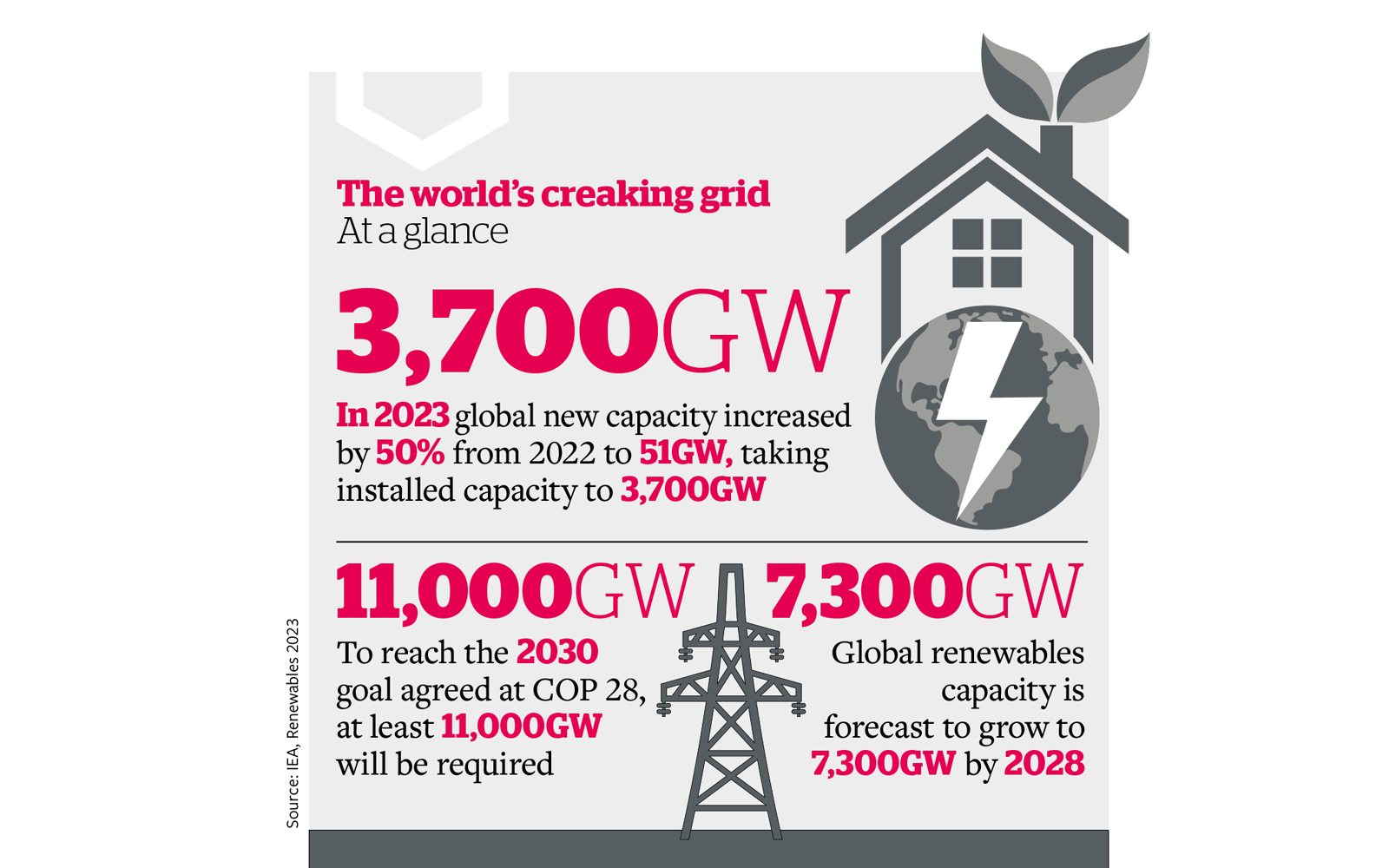Urgent upgrades needed for UK power grid
The UK power sector faces urgent challenges in integrating renewable energy into the grid. With more than 50GW of new capacity targeted by 2030, major grid upgrades and energy storage investments are essential, says Mahmoud Habboush at EIC.

Like many others worldwide, the UK’s power sector is grappling with the complexities of integrating a surge of new cleantech power sources, including wind and solar, into the national grid. With the government targeting more than 50GW of new capacity by 2030, including the recently announced 9.6GW of renewable power across 131 projects in its flagship auction, the need for a strategic and coordinated approach to grid expansion and modernisation is more urgent than ever.
Grid capacity strainss
One of the most pressing challenges facing the power sector is that of capacity. In 2022 alone, 2,882 projects were added to EICDataStream globally, marking an increase from 2,529 projects in 2021. Notably, renewables constitute 48% of these new projects, rising to 54% when offshore wind is included. This trend, mirrored in the UK, highlights a critical need for substantial grid upgrades. The current infrastructure is inadequate to support the influx of new projects, and the shortage of substations further compounds the issue. These substations, crucial for managing voltage levels, must be expanded to facilitate efficient electricity distribution across the country.
Investment in energy storage
Beyond expanding grid capacity, the sector requires significant investments in energy storage solutions to manage the intermittent nature of renewable energy. These storage systems are essential for balancing supply and demand, ensuring a reliable and stable power supply as renewables become a larger share of the energy mix.
A call for immediate action
EIC has emphasised the urgency of addressing these issues in its recent manifesto, which states: “We need to look at the grid as a matter of urgency and ensure that we have the capacity and capability to deliver at pace while our supply chain has one eye on international markets which are more politically stable and financially secure.” EIC is calling for a clear energy roadmap and consistent policies to drive growth and demand in the power sector.
Building a sustainable future
As the global shift towards renewable energy accelerates, particularly with the growth of offshore wind projects, the future of the power sector will depend heavily on the successful integration of these sources into existing energy systems. Key to this transition will be the expansion of grid capacity and the advancing of energy storage technologies. For the UK and other nations, overcoming these challenges will require significant investments in both infrastructure and innovation. By addressing these needs, countries can build resilient and adaptable national grids capable of supporting a diverse array of renewable energy projects, paving the way for a stable, sustainable and low-carbon energy future.
By Mahmoud Habboush, Communications Adviser, EIC

EIC members speak out


Technologies to increase capacity
Ann Moore, Industry Principal – Power & Utilities, AVEVA
Grid limitations play a major role in the integration of renewable energy sources, but with proper preparation and technology in place, this can be overcome. One way to navigate the challenges of transitioning to cleaner electricity generation and the increasing complexity of grid management is digital twin technology.
Digital twins can create virtual representations of a smart grid network, offering real-time visibility into asset performance and operational dynamics. This enables business leaders to optimise grid operations, reduce downtime through proactive maintenance, and enhance overall grid resilience. Moreover, digital twins facilitate scenario-based decision-making, empowering teams to manage peak energy loads effectively and respond swiftly to disruptions. This ultimately ensures reliable and sustainable energy delivery amid evolving pressures, including environmental goals, skills gap, and cost.
Daniel Moura, CEO, Pix Force

Our business relies on the power grid because we use a lot of graphic processing units (GPUs) to train artificial intelligence (AI) models, and these require a lot of electricity. With current grid limitations, keeping everything running smoothly can be challenging. We have invested in AI-driven monitoring systems that let us spot and fix issues early, ensuring we have a steady power supply.
Integrating renewable energy sources into the existing power grid is not easy because of inconsistent power generation and the need for better grid management. We’re developing AI tools to predict energy output from sources such as wind and solar, helping to stabilise the grid.
Securing skilled talent in the power sector is also challenging, so we invest in training programmes, work with universities and promote continuous learning.
Image credit | Frederic Neema | Shutterstock | iStock






Follow us
Advertise
Free e-Newsletter